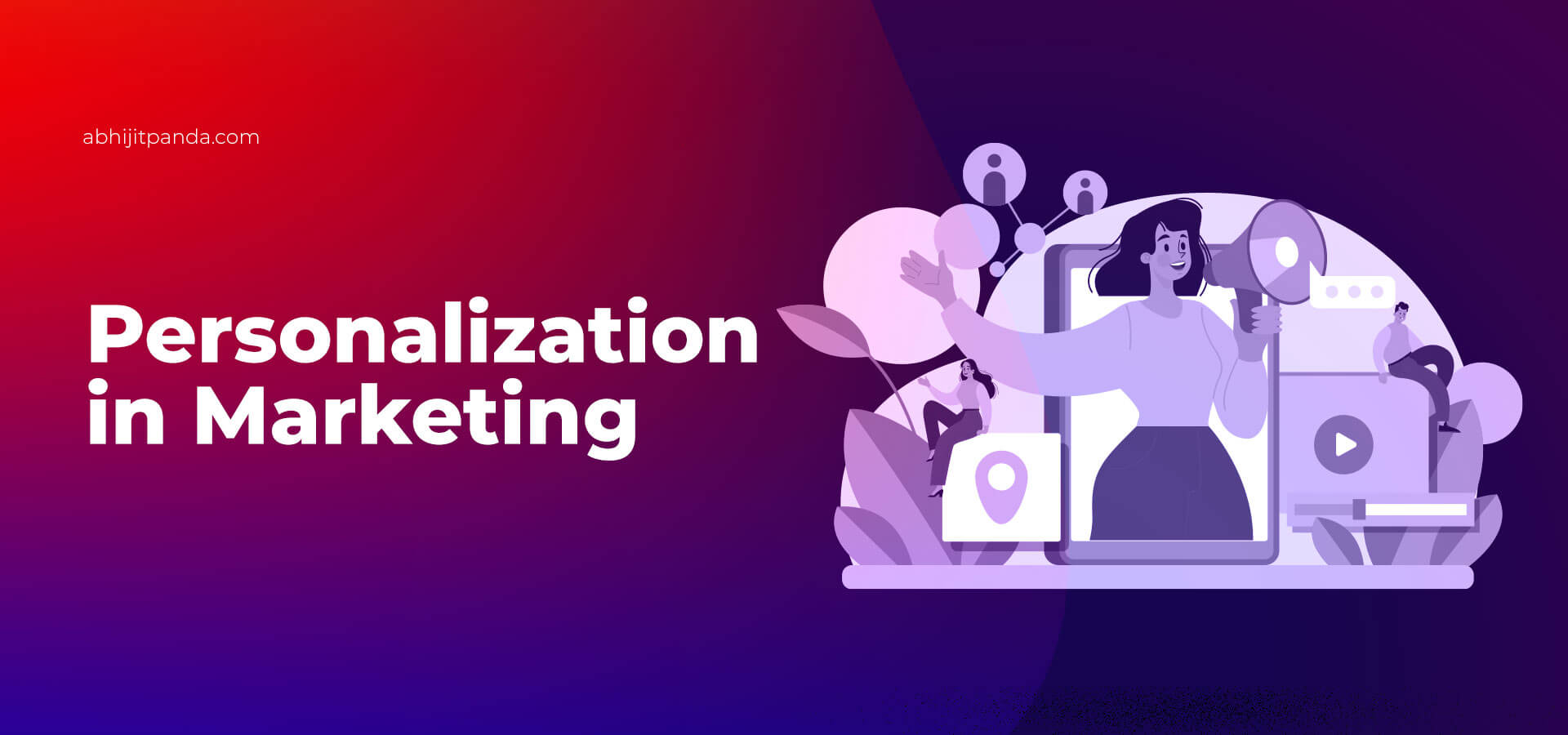 Personalization in Marketing
Personalization in Marketing
Wikipedia defines personalization as “tailoring a service or a product to accommodate specific individuals, sometimes tied to groups or segments of individuals.” At present, personalization is one of the hottest trends in marketing. Enterprises combine digital communication tools and data analytics solutions to influence customers and prospects by offering individualized product offerings and brand messages.
Why is Personalization in Marketing Extremely Important?
Many surveys have highlighted the ineffectiveness of old-fashioned marketing strategies in influencing customers and prospects. In the digital age, no brand can boost customer acquisition by basting generic advertising messages at regular intervals. Customers and prospects these days expect brands to provide personalized experiences.
Leading brands have already switched from traditional marketing to personalized marketing. They meet the expectations of prospects and customers by implementing personalization in marketing in various ways. Here are some important statistics that depict the huge significance of personalization in marketing.
- 90% of consumers in the USA find marketing personalization very or somewhat appealing.
- 80% of consumers prefer brands that provide personalized experiences.
- 91% of consumers shop with brands that provide relevant offers and recommendations.
- 72% of consumers engage only with personalized messaging.
- 63% of consumers abandon brands that use poor personalization tactics.
At the same time, a significant percentage of consumers are ready to share personal behavioral data, purchase history, and preferences with brands to get personalized experiences. That is why; no business can drive customer acquisition and customer retention without investing in personalization in marketing. They must create individualized experiences for prospects to convert them into customers.
How Brands Implement Personalization in Marketing?
Leading brands already boost customer acquisition and revenue growth by running personalized marketing campaigns. Ecommerce companies recommend relevant products to customers based on their purchase history and preferences. Likewise, streaming platforms use recommendation engines to increase subscription renewals.
However, every enterprise implements personalization in marketing in a distinct way. They invest in data analytics tools to plan and execute personalized marketing campaigns based on real-time data. We can understand how brands improve personalization in marketing by discussing some of their strategies and best practices.
Data Collection and Analysis
The outcome of personalized marketing campaigns depends on meeting customers’ needs and expectations. Brands need to identify potential customers along with answering important questions like what they have done, what they want, and what they expect. Marketers answer these important questions using specialized software like data management platforms and data analytics solutions.
Data management platforms help them collect real-time information about customers and marketing campaigns. At the same time, data analytics solutions help them gain insights and detect trends by analyzing large volumes of customer data. These personalized solutions make it easier for marketers to send the right message to the right prospect/customer at the right time.
Buyer Persona Creation
The real-time data creates opportunities for marketers to represent the ideal customers in a semi-fictional way by creating buyer personas. Buyer personas help marketers answer important questions like what customers do, what they like to do, and how they spend their time. Hence, it becomes easier for marketers to know the ideal customer and personalize marketing messages according to her needs and preferences.
Audience Segmentation
While planning marketing campaigns, brands target customers with varying needs and preferences. They divide customers into multiple segments based on their interests, needs, and preferences. Marketers often segment customers according to their current position in the buyer’s journey. The segmentation makes it easier for them to send messages and content tailored according to customers’ interests and preferences.
Web Behavior Monitoring
Brands divert visitors to their websites by running multichannel marketing campaigns. Websites create opportunities for them to monitor and understand the behavioral pattern of customers and prospects. There are many tools that help marketers collect and analyze information about website visitors. These tools help marketers understand customer behavior using important metrics like time spent on the website, pages visited, and bounce rate.
Location-Based Targeting
Sending the right message to the right customer through the right channel is the basic principle of personalization in marketing. Brands make marketing messages more impactful by focusing on deciding the right time of the day and the right day of the week to send them. International brands consider time zones when deciding when to send the marketing message. They send messages to customers at the right time using location-based targeting techniques.
Targeted Email Campaigns
Most websites request customers to share personal information using sign-up forms. The information shared by a prospect helps marketers understand a prospect’s needs and expectations. Marketers leverage this information to influence potential customers by sending personalized email messages. They deliver a variety of content to the prospect according to her position in the buyers’ journey. Brands invest in email marketing automation tools to send individualized emails to customers at the right time.
Custom Video Messaging
Modern consumers spend most of their digital media time watching videos. The massive popularity of online videos creates opportunities for brands to engage potential customers by sending videos with custom messaging. The personalized message makes the prospect connect with the brand and remember it while placing orders. But businesses have to invest in additional resources to scale customer video messaging campaigns.
Social Media Marketing
Social networks create opportunities for brands to collect customer information along with keeping the customer engaged. A brand can keep prospects and customers engaged by posting a variety of content. At the same time, marketers can send personalized messages to customers on social media. They continue the conversation as customers respond to the messages. The information collected from social networking platforms helps marketers deliver personalized messages to customers through other marketing channels.
Conclusion
Personalization is currently one of the hottest marketing trends. Businesses personalize various marketing campaigns to improve customer experience, influence purchase decisions, and drive sales conversion. But a brand can implement personalization in marketing in a variety of ways. Every brand should decide the right way to personalize marketing campaigns by understanding customers and prospects based on real-time data collected from diverse sources.









Leave a Reply